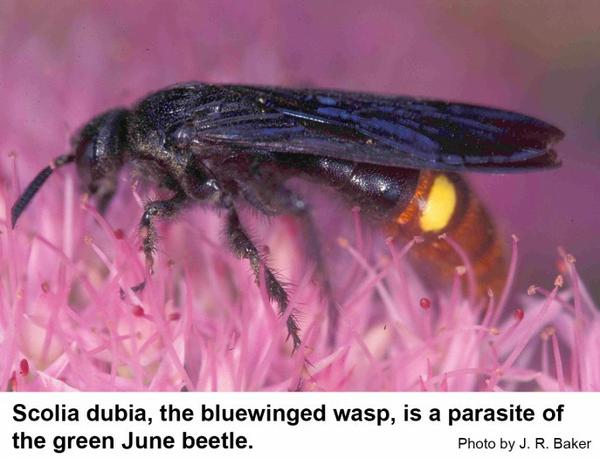Blue Winged Wasps
go.ncsu.edu/readext?728323
en Español / em Português
El inglés es el idioma de control de esta página. En la medida en que haya algún conflicto entre la traducción al inglés y la traducción, el inglés prevalece.
Al hacer clic en el enlace de traducción se activa un servicio de traducción gratuito para convertir la página al español. Al igual que con cualquier traducción por Internet, la conversión no es sensible al contexto y puede que no traduzca el texto en su significado original. NC State Extension no garantiza la exactitud del texto traducido. Por favor, tenga en cuenta que algunas aplicaciones y/o servicios pueden no funcionar como se espera cuando se traducen.
Português
Inglês é o idioma de controle desta página. Na medida que haja algum conflito entre o texto original em Inglês e a tradução, o Inglês prevalece.
Ao clicar no link de tradução, um serviço gratuito de tradução será ativado para converter a página para o Português. Como em qualquer tradução pela internet, a conversão não é sensivel ao contexto e pode não ocorrer a tradução para o significado orginal. O serviço de Extensão da Carolina do Norte (NC State Extension) não garante a exatidão do texto traduzido. Por favor, observe que algumas funções ou serviços podem não funcionar como esperado após a tradução.
English
English is the controlling language of this page. To the extent there is any conflict between the English text and the translation, English controls.
Clicking on the translation link activates a free translation service to convert the page to Spanish. As with any Internet translation, the conversion is not context-sensitive and may not translate the text to its original meaning. NC State Extension does not guarantee the accuracy of the translated text. Please note that some applications and/or services may not function as expected when translated.
Collapse ▲As beneficial insects, Blue Winged Wasps are great to have in your yard. Blue-winged  wasps are often noticed flying over pastures or lawns that are infested with white grubs, especially green June beetle grubs. These wasps also forage for nectar on flowers of goldenrod and whatever else is in bloom.They love to prey on Green June Beetle larvae.
wasps are often noticed flying over pastures or lawns that are infested with white grubs, especially green June beetle grubs. These wasps also forage for nectar on flowers of goldenrod and whatever else is in bloom.They love to prey on Green June Beetle larvae.
Scoliid wasps are dark, relatively large, robust, slightly hairy insects with light yellow spots or other markings. The most common scoliid in North Carolina is Scolia dubia. It is sometimes referred to as the blue-winged wasp. The adult is over 1/2 inch long with black antennae and a shiny black head, thorax and fore abdomen. About midway along the abdomen are two yellow spots (one on each side). These may appear as a band across the abdomen when the wasp is flying. The hind portion of the abdomen is reddish brown and somewhat fuzzy. The wings are blue-black. Scoliid wasps are usually considered beneficial insects because they help control green June beetle and other beetle grubs. They are present from June to October, but are most abundant during August. The wasps are often seen hovering a few inches above lawns in search of grubs (or males searching for females). Female wasps dig through the soil in search of the grubs, burrowing tunnels or following those made by the grubs. On locating a grub, she stings it and paralyzes it. Sometimes these wasps burrow deeper and form a chamber in which the grub is entombed. Afterward she lays a egg, which stands on end. Sometimes females sting grubs but do not lay eggs. The grub never recovers from the sting. When it hatches, the wasp larva consumes the grub in about two weeks and then spins a cocoon to spend the fall and winter as a mature prepupa. The prepupae molt into pupae from which emerges a new generation of adult wasps.




